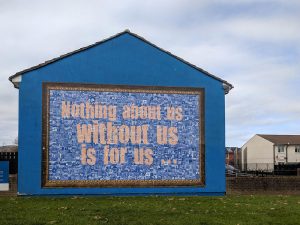
September 15, 2018; Generocity
Over the years, there have been many attempts at “diversifying” the nonprofit board, but as BoardSource reports have shown us every two years, nonprofit boards remain stubbornly, overwhelmingly white. This occurs among many different types of boards, including those who primarily serve marginalized communities.
The fact is, the issue is not the mere diversification of boards, but the inclusiveness of boards and, in many cases, that inclusiveness needs to be addressed at more than simply the board level of an organization. That means that external help that surfaces candidates of color for local board may be helpful, but it is far from sufficient and, in the end, reveals an inability to engage people of color at other levels. Still, these kinds of efforts are always multifaceted and comprise a combination of external and internal forces. But without internal will and diehard champions among leadership, “diversity hires” to the board could find themselves in unreasonable positions.
Take, for example, the Community Leadership Pipeline Initiative (CLPI), which trains LGBTQ+ Philadelphians to serve on nonprofit boards. This program was formed after a 2017 Philadelphia Commission on Human Resources report described the racism in the LGBT community. In response to this report, Mayor Kenney said, “I attended the hearings that PCHR held…and I was able to hear about some particularly troubling experiences. Racism in the LGBT community is a real issue; we all need to do more to address it.”
Sign up for our free newsletters
Subscribe to NPQ's newsletters to have our top stories delivered directly to your inbox.
By signing up, you agree to our privacy policy and terms of use, and to receive messages from NPQ and our partners.
Enter the CLPI. This program will particularly recruit “LGBTQ people of color, youth, trans people, and seniors,” all communities that are underrepresented on nonprofit boards in the City of Philadelphia. To ensure diversity and accessibility to this six-month program, barriers such as tuition costs and experience have been removed from the eligibility criteria. Furthermore, the 12 organizations that have committed to recruiting a CLPI graduate onto their board have waived the “give or get” requirement for their first year of board service.
Amber Hikes, executive director of the Philadelphia Office of LGBT Affairs, says, “Obviously we knew from anecdotal evidence and also research that in this city, LGBTQ people of color are underrepresented in terms of our leadership in LGBTQ organizations. We’ve seen this problem progressing for quite a while but have never taken such an intentional approach.”
This is an “intentional approach,” no doubt, but recruitment merely scratches the surface of what it takes to create a culture that values equity and inclusion. How do we know that once CLPI graduates go on to serve on a nonprofit board that their opinions and experiences will be valued? What steps have the LGBTQ organizations recruiting CLPI graduates taken to ensure their new board members are engaged and not just the token person of color sitting at the table?
In the case described above, we see that CLPI is absolutely helping with the intentional pursuit component, but it is up to the nonprofit organizations accepting CLPI graduates onto their boards to recognize that the job of creating inclusive boards is one that should not be carried on the shoulders of new recruits who are all-too-often charged with the complex and thankless job of nudging an organization into a multi-cultural state. Rather, it is incumbent on existing (most often white) board members to interrogate their own comfort and engage in the necessary internally culture-building work that foster lasting inclusion and equity.—Sheela Nimishakavi and Ruth McCambridge










